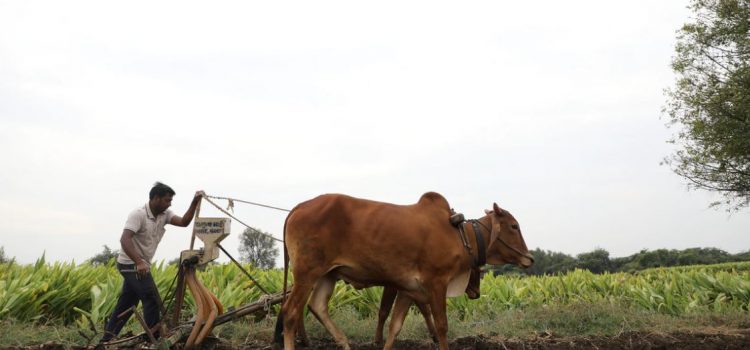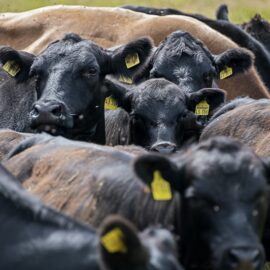

This article is an excerpt from the Shortform book guide to "Guns, Germs, and Steel" by Jared Diamond. Shortform has the world's best summaries and analyses of books you should be reading.
Like this article? Sign up for a free trial here .
What made Eurasia a prime location for domesticable plants? How did Eurasia’s geographic location give it an advantage?
Jared Diamond, a historian, geographer, and ornithologist, contends that Eurasia benefited from having geographical features that supported the diffusion of crops and the rise and spread of food production. He said that the two features that set Eurasia apart were its axis orientation and the lack of topographic and ecological factors.
Continue reading to learn about the history of the diffusion of crops in Eurasia.
Eurasia’s Favorable Axis Orientation
Jared Diamond explained in his book Guns, Germs, and Steel that Eurasia’s geographical location played a role in the diffusion of crops. Diamond’s main argument on this point is that Eurasia’s average north-south distance across the continent is shorter than the average east-west distance across the continent. He describes this as the continent’s axis orientation: Eurasia (including present-day Asia, Europe, and North Africa) has a predominantly east-west orientation. In contrast, the orientation of the Americas is north-south, as is the remaining portion of Africa.
(Shortform note: While the dominant axis of the Americas is north-south (about 9,000 miles north-to-south versus 3,000 miles east-to-west), Africa’s axes aren’t that different from one another (the difference is about 400 miles). Therefore, axis orientation may not be as relevant to the development of agriculture there as Diamond believes it was elsewhere. Instead, evidence suggests that other ecological barriers (such as differences in regional soil quality) were a bigger obstacle to the spread of food production in Africa.)
Diamond contends that an east-west axis facilitates the development and spread of food production more easily than a north-south axis because plants adapt to grow within similar latitudes: Plants suited to a certain seasonal day length can’t easily spread to another latitude where the seasonal day length differs. By contrast, continents with a north-south axis encompass more latitudes. If humans on these continents tried to spread crops to other latitudes, those crops wouldn’t thrive. Regions that face these geographic limitations to the spread of crops, therefore, face limitations to the spread of food production, which is largely based on maintaining crops.
| Did Plants Spread, or Were They Independently Domesticated? Diamond’s argument about the importance of latitude is built on the idea that domesticated crops diffused outward from the Fertile Crescent: Plants from the Fertile Crescent were transferred to neighboring farmers along latitudinal lines because they were suited to the common climate. However, archaeologists debate whether the plants that were domesticated throughout Eurasia came from crops that originated in the Fertile Crescent. Some argue that crops were domesticated independently in different regions throughout Eurasia—this indicates that the diffusion of crops along an east-west axis wasn’t as important as Diamond believes. In this scenario, regional foragers began cultivating their own local crops (not crops they obtained from latitudinal neighbors). From a genetic standpoint, these independently cultivated crops shouldn’t have Fertile Crescent ancestor crops. Others argue that crops were domesticated once in the Fertile Crescent and then transposed from there across the continent. Recent evidence in support of this view is that most of the domesticated plants and animals throughout western Europe have genetic links to the earliest Fertile Crescent crops. If crops from the Fertile Crescent were the ancestors of these western European crops, scholars argue that Fertile Crescent crops must have been transferred to these distant places at some point in history. There’s no consensus among scholars on which model of Eurasian plant domestication describes what actually happened in the past. |
In addition, animals adapt to thrive within certain latitudes and climates. It would have been harder, therefore, for domesticated animals to spread along a north-south axis with its drastically different climates than to spread along an east-west axis.
(Shortform note: Recent research finds that plants and animals respond to climate differences in similar ways: They gradually adapt to survive within a certain range of environmental conditions. Hot-weather plants and animals don’t thrive in cold weather, and vice versa. This suggests that Diamond is right: Early domesticated animals would have spread more readily to environmentally similar regions than to environmentally different regions. Taking altitude and other microclimate factors into account, climate conditions tend to be more similar along a line of latitude than along a line of longitude.)
Fewer Topographic or Ecological Obstacles
A second factor affecting the spread of food production is the presence of topographic or ecological obstacles. It’s not quite enough to have an east-west axis, according to Diamond—over time, humans had to be able to spread crops and animals along that axis without encountering obstacles that threatened the survival of the plants, animals, or humans.
In Eurasia, there were historically few obstacles to the spread of domesticated plants and animals from the Fertile Crescent westward. Archaeologists find that food production spread quickly in that direction. However, the Fertile Crescent plants and animals weren’t well adapted to the different rainfall conditions of eastern India, so they were delayed in their spread eastward. Nevertheless, Fertile Crescent crops spread over the majority of Eurasia earlier and faster than crops on other continents.
In North America, for instance, early domesticated crops spread extremely slowly from the US Southeast to the US Southwest—which share the same latitude—because infertile desert conditions barred the way. Ecological barriers therefore affected the spread of food production across North America more than the spread of food production across Eurasia.
| The Spread of Food Production in the Americas Researchers find that agriculture spread quickly from the Fertile Crescent to northwestern Europe within about 3,000 years. Some evidence suggests that migrant farmers from the Fertile Crescent gradually moved west during this period, bringing their agricultural practices with them. By contrast, crops from Central America spread about half that distance—northwest to the modern-day US Southwest—over a period of about 2,000 years. Some archaeologists suggest that differences in moisture conditions affected the pace of this spread in the Americas. However, there’s no expert consensus on the reason eastern American crops didn’t spread to western America. While ecological barriers could have been an important factor, there were many other factors as well, including the bountiful wild food sources available to the Native Americans of eastern North America: Food production there was practiced alongside foraging, and tribes had few reasons to disperse westward because their region supported them well. |
For these reasons—an abundance of domesticable plants and animals, and favorable geographic conditions—Eurasia got a head start on food production compared to the rest of the continents.

———End of Preview———
Like what you just read? Read the rest of the world's best book summary and analysis of Jared Diamond's "Guns, Germs, and Steel" at Shortform .
Here's what you'll find in our full Guns, Germs, and Steel summary :
- An in-depth look into why societies historically took different paths
- The environmental factors that affected the historical development of those societies
- Why Eurasians had strategic advantages over non-Eurasians






